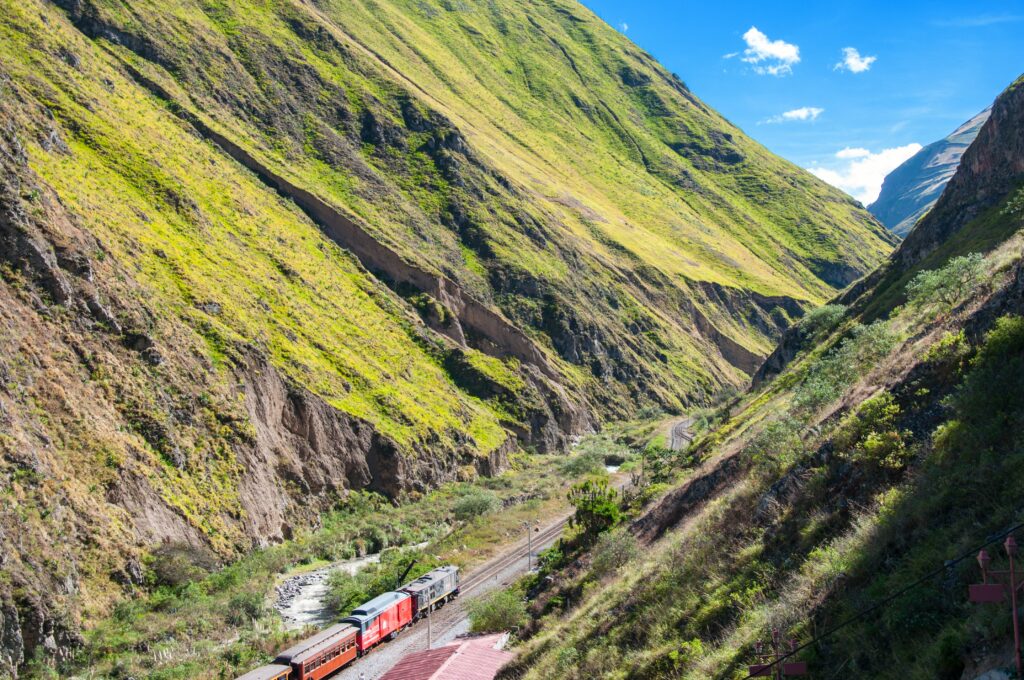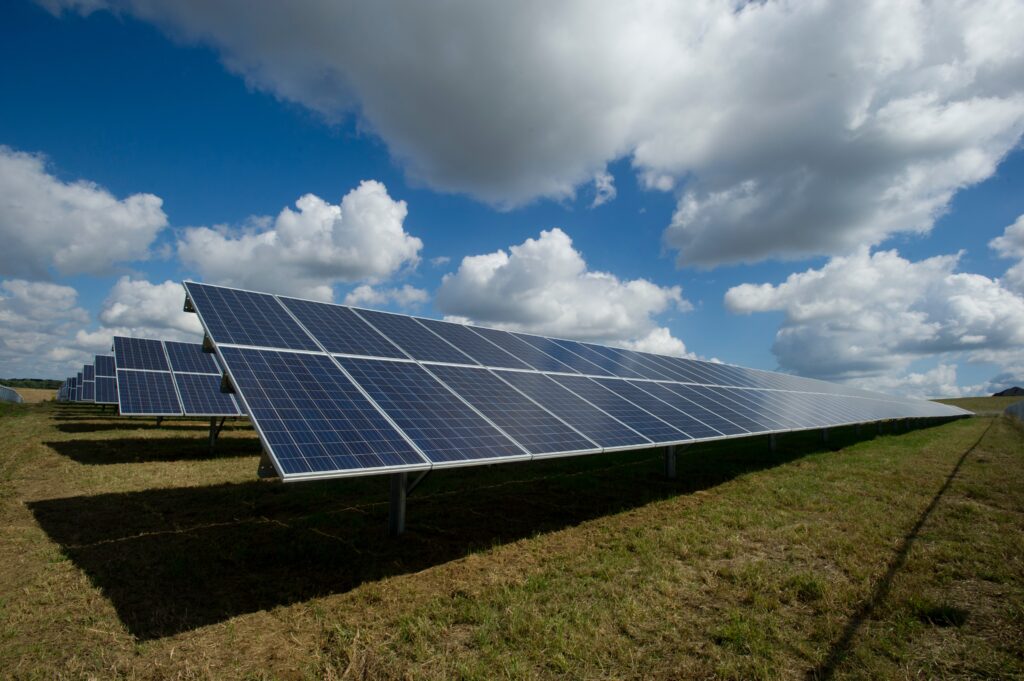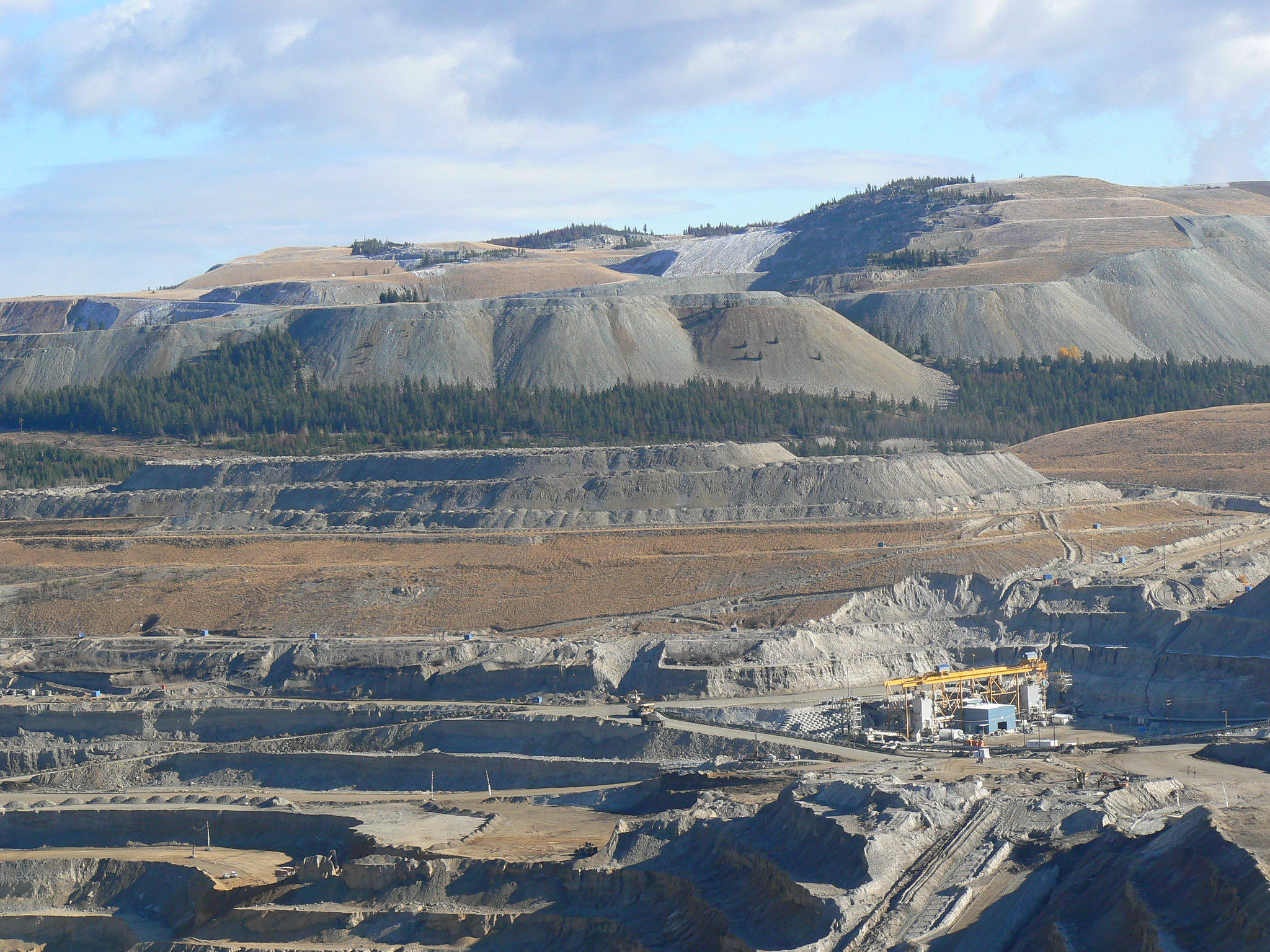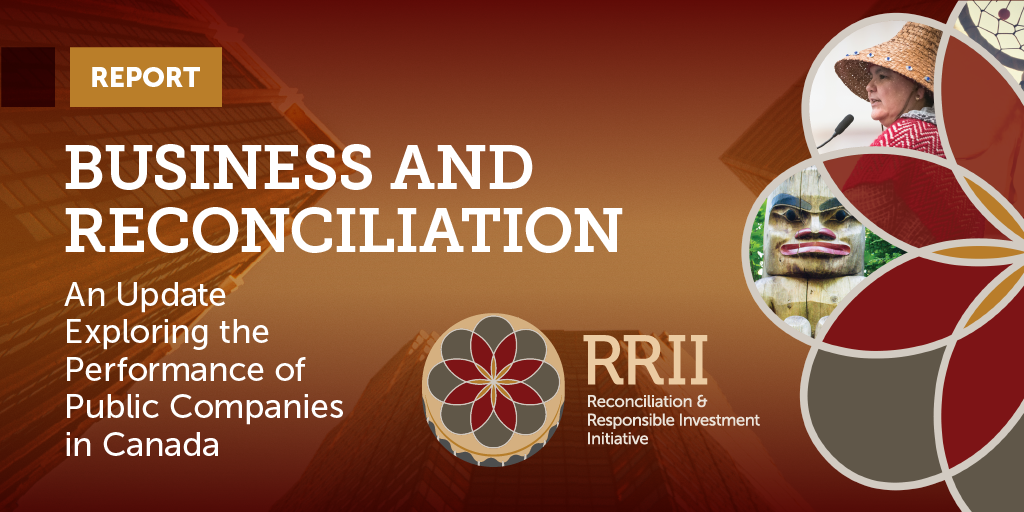by Tatiana Alarcon (Programme and Advocacy Director, Mining Shared Value) and Gabriela Ruiz (Research Officer, SHARE)
There is a global consensus that human production and consumption of fossil fuels are the main contributors to rising greenhouse gas (GHG) emissions and global warming.[1] Efforts to achieve net-zero emissions have necessitated the definition of targets and the formulation of climate agreements in multilateral arenas to encourage governments and businesses to curb dependence on fossil fuels; as well as to ensure a just transition to a low-carbon economy that minimizes hardships for workers and communities and maximizes the benefits of climate policies.[2]
A transition from conventional carbon-based energy sources will require an increased uptake of solar, wind, geothermal, and energy storage solutions. This will, in turn, create a heightened demand for raw materials for these technologies, including iron ore for replacing concrete with steel, aluminum for efficient transport, and lithium, copper, manganese, and graphite for battery technologies and power grid improvements.
Latin America, and specifically the countries of the Andean community – Bolivia, Colombia, Ecuador, and Peru – hold significant reserves of these raw materials, and the energy transition’s real and potential socioeconomic impacts on local economies and communities, including Indigenous peoples, has been underexplored by governments, and researchers.
What is a just transition?
There are different interpretations of what a just transition means. The International Labour Organization (ILO) and other environmental and social justice movements agree that a just transition requires a shift from an extractive economy to a regenerative economy while ensuring the just, equitable, and fairly distributed costs and benefits of a green economy. A just transition for all must contribute to, among others, the goals of decent work, social inclusion and the eradication of poverty.[3]
“Just transition” definitions are also rooted in concepts like self-determination, Indigenous sovereignty, and resilience. The Indigenous Environmental Network points out that a just transition “recognizes Indigenous rights, sovereignty, and assertion of self-determination to control and manage our ancestral lands, waters, and territories and all natural resources inclusive of our own laws, values, customs and traditions.”[4]
It acknowledges that the transition to a regenerative economy must be just and equitable, redress past harms, and create new relationships of power for the future.[5]
The Paris Agreement has pushed governments to set nationally determined contributions (NDCs) to reduce national emissions and ensure “a just transition of the workforce and the creation of decent work and quality jobs in accordance with the NDCs.”[6] Furthermore, the Agreement has guided changes across the global mining sector to expedite decarbonization efforts, spurring investor interest and coverage by international reporting standards of scope 1, 2, and 3 GHG emissions. For example, members of the International Council on Mining and Metals (ICMM) have collectively committed to a goal of net zero scope 1 and 2 emissions by 2050 and accelerating action on scope 3.[7]
In Latin America, the just transition represents a challenge due to the region’s economic dependence on coal, natural gas, and crude oil extraction. Almost 4% of the Gross Domestic Product (GDP) comes from the extractive sector, and mining exports represent more than 50% of total exports in countries like Chile and Peru.[8]
Transnational companies are the leading operators of extraction projects of fossil fuels. For example, the Working Group on Mining and Human Rights in Latin America evidenced that Canadian companies run between 50% and 70% of mining activity in Latin America.[9]
In the Andean region, governments are proposing public policies and projects focused on the transition from an extractive economy toward decarbonization. In Bolivia, the 2025 Patriotic Agenda (Agenda Patriótica 2025) proposes a change in the energy matrix focused on reducing fossil fuels for electricity generation and increasing renewable energy sources.[10] Energy production in Bolivia depends mainly on natural gas, and lithium extraction for green technologies represents a potential source of revenue. In 2022, Colombia issued the Energy Transition Policy (CONPES 4075) that establishes guidelines, strategies and actions to promote the use of non-conventional sources of energy.[11]

A freight train passes through Chimborazo, Ecuador. c/o Fernando Tapia (Unsplash)
In Ecuador, the Law on Energy Efficiency declares the efficient, rational and sustainable use of energy to be of national interest and a state policy. The government of Ecuador is committed to encouraging private investment to expand the energy matrix based on renewable energy policies while generating decent work and social development.[12] In Peru, the government is promoting an energy transition plan considering the use of electric vehicles and renewable energies as the steps to achieve carbon emission reduction and economic recovery after the COVID-19 pandemic.[13]
Civil society organizations have criticized these policies and plans due to the omission of social aspects and impacts in the planning and execution of the energy transition and decarbonization measures. Even though some countries have incorporated the concept of just transition in their policies, many end up being reductionist, with little consideration and participation of marginalized voices, like Indigenous peoples, women and workers.[14]
Challenges and opportunities for a just transition
Just transition and Indigenous peoples
Despite their small contribution to GHG emissions, Indigenous peoples are often the first and most affected by climate change effects. Due to their dependence on, and relationship with the natural environment, climate change exacerbates difficulties faced by Indigenous communities, including food insecurity, displacement, dispossession of lands and resources, and human rights violations.[15]
The energy transition has, and will continue to, raise the demand for critical minerals to develop renewable energy technologies and, with that, open the door to the development of new extractive and energy projects operating on Indigenous lands. At the same time, this scenario greatly increases the risk of failure to incorporate the United Nations Declaration on the Rights of Indigenous Peoples (UNDRIP) principles of free, prior, and informed consent (FPIC) in community engagement and further displacement and dispossession from ancestral lands. Additionally, curbing fossil-fuel extraction may threaten Indigenous communities that rely on the industry as a source of employment and on diesel fuel as a source of energy.
The transition represents a chance to implement climate and energy solutions in a fair and inclusive human and Indigenous rights-based process, in which vulnerable and marginalized populations, including Indigenous peoples, are at the center of decision-making related to policies and projects that may affect their rights and livelihoods.
Indigenous peoples can be vital actors in transitioning to a low-carbon economy and proposing green solutions, and Indigenous traditional knowledge can add critical information to the global discourse to enhance ecosystem resilience. For example, Three Nations Energy, a joint venture of the Mikisew Cree First Nation, Athabasca Chipewyan First Nation, and the Fort Chipewyan Métis Association, owns and manages a solar farm with 5,760 solar panels that supply a diesel fuel-reliant community in northeast Alberta, Canada, with 25% of its energy needs.[16]

A solar panel farm. c/o American Public Power Association (Unsplash)
For the just transition to take place, communities and their well-being must take center stage. For Indigenous peoples, this means committing to operationalize FPIC, the UNDRIP, and other international and domestic frameworks for reconciliation (e.g. In Canada, the Truth and Reconciliation Commission Report (TRC) and the Final Report of the National Inquiry into Missing and Murdered Indigenous Women and Girls), iteratively in high-level and community-level project engagement.
Allowing poor engagement patterns to persist will result in the same consequences as past extractive industry projects where Indigenous Peoples have received few economic benefits from the extraction of their resources without attention to ongoing environmental concerns and the social impacts of development, including human rights violations.
Just transition and local suppliers
As a result of the demand for raw materials, many critical minerals, including copper, nickel, cobalt, and lithium, will be in deficit by 2025-2026.[17] Demand for copper is expected to double by 2035, with an estimated 20% shortfall in global supply, despite maximized capacity utilization and increased recycling rates.[18]
In the energy transition, suppliers to the mining sector will be impacted not only by the increase or decrease of activity in certain types of mining but also by the pressure being applied to the industry to reduce its carbon footprint. This has implications for local economies and workforces along the entire mining value chain, as for some miners, a significant portion of emissions may be attributed to purchased goods and services (scope 3, category 1).
The procurement of goods and services typically represents the most significant financial flow from mining projects and operations to host countries. Figures from the World Gold Council support this assertion, with member companies’ 2020 in-country procurement spending totalling US$26.2 billion, exceeding both employee wages (US$8.7 billion) and tax payments to governments (US$7.6 billion).[19]
The impacts of the just transition on local suppliers are diverse. Emissions reduction commitments could have adverse consequences for suppliers at the local level if purchasing firms begin to emphasize selection criteria that prioritize goods with lower carbon footprints. Conventional supplier performance indicators, such as quality, service, and price, are expected to expand to better capture sourcing, manufacturing, packaging, distribution, usage, and disposal elements. This will require considerable adaptation from suppliers, their burden broadening from transitioning to low-carbon inputs or technologies to transforming their business models.
To meet new and increasingly complex product and service demands that align with strategies aimed at reducing scope 1 and 2 emissions from mining activities (e.g., changes to power supply, electrification of fleets, shifts to clean fuels), supply chain partners will have to evolve. There are inherent challenges in targeting supply chain emissions, especially when discussing the decentralized, often global, and complex network of suppliers. These difficulties include data collection, competing procurement priorities, and the need for standardized best-practice guidance.
Local procurement must be a focal point when considering the principles of a just transition, including distributive justice – the distribution of costs and benefits through avenues such as compensation, retraining and reskilling; procedural justice – ensuring informed dialogue and participation in decision-making; and restorative justice – rehabilitation of communities adversely affected and long term planning for recovery.[20]
A just transition should consider the entire value chain, including upstream activities. It should aim to maximize the opportunities and provide support for those who are impacted by mining activity. Additionally, the efforts to reduce greenhouse gas emissions should not place unreasonable expectations on suppliers.
A just transition heightens the need for inclusive economic participation, particularly in mining host communities, where suppliers are engaged in long-term dialogue to support local resilience and secure sustainable livelihoods. Just transition policies should address the adverse impacts the process will have on local firms. Further, mining host countries must prioritize local procurement through supply-side policy. Decarbonizing upstream supply will bring about greater complexity of purchasing company needs, a shifting compliance landscape, and subsequent supplier process and product innovation.
Facilitating supplier capacity-building programs that integrate access to green technology would help governments ensure a more effective transition. The demand-side policy should encourage bid-scoring provisions that account for local businesses’ differing maturity levels to achieve scope 1 and 2 emissions reductions. Facilitating capacity building for suppliers to quantify, report and reduce emissions will also result in new opportunities for supplier engagement for the mining companies.
Furthermore, strategies may require communicating emissions reduction targets with suppliers, which may take the form of company standards, third-party standards, or tailored contract language. Other approaches may be informative, offering support to suppliers through training and tools, such as frameworks and software, or partnering with sourcing teams to increase collaboration with procurement teams.
Conclusion
Efforts to promote a just transition must consider the impact that policies to reduce carbon emissions and increased extraction of critical minerals will have on vulnerable and marginalized populations, including Indigenous peoples, and the impact on local economies, including suppliers to the mining sector.
To ensure a just transition, an immense amount of communication, coordination and monitoring must occur between the energy companies, local and Indigenous communities, and local businesses impacted by extractive activity. If approached collaboratively and proactively, a reduction of our reliance on fossil fuels may allow society to reimagine how we think about energy and the global economy.
[1] Intergovernmental Panel on Climate Change. (2021). Summary for Policymakers. In: Climate Change 2021: The Physical Science Basis. Contribution of Working Group I to the Sixth Assessment Report of the Intergovernmental Panel on Climate Change. Cambridge University Press, Cambridge, United Kingdom and New York, NY, USA, pp. 3−32, doi:10.1017; IPCC. (2018). Global Warming of 1.5°C. https://www.ipcc.ch/sr15/; IPCC. (2014). Climate Change 2014: Synthesis Report. Contribution of Working Groups I, II and III to the Fifth Assessment Report of the Intergovernmental Panel on Climate Change. https://www.ipcc.ch/report/ar5/syr/
[2] Mertins-Kirkwood, H., & Deshpande, Z. (2019). Who is included in a Just Transition? Considering social equity in Canada’s shift to a zero-carbon economy. Canadian Center for Policy Alternatives. https://www.policyalternatives.ca/sites/default/files/uploads/publications/National Office/2019/08/Who is included in a just transition_final.pdf
[3] Smith, Samantha. (2017). Just transition. A report for the OECD. https://www.oecd.org/env/cc/g20-climate/collapsecontents/Just-Transition-Centre-report-just-transition.pdf; Climate Justice Alliance. (n.d.) Just transition. A framework for change. https://climatejusticealliance.org/just-transition/; Robins, N. (2022). The just transition: shaping the delivery of Inevitable Policy Response. https://www.unpri.org/download?ac=16124
[4] Indigenous Environmental Network. (n.d.) Indigenous principles of just transition. https://www.ienearth.org/wp-content/uploads/2017/10/IENJustTransitionPrinciples.pdf
[5] Indigenous Environmental Network. (n.d.) Indigenous principles of just transition. https://www.ienearth.org/wp-content/uploads/2017/10/IENJustTransitionPrinciples.pdf
[6] Paris Agreement. (2015). https://unfccc.int/sites/default/files/english_paris_agreement.pdf
[7] International Council on Mining and Metals (ICMM). (2022). Our commitment to a goal of net zero by 2050 or sooner.
[8] Casaburi, G. & Pietrobelli, C. (2022). Las cinco nuevas dimensiones del sector minero en America Latina. https://blogs.iadb.org/innovacion/es/las-cinco-nuevas-dimensiones-del-sector-minero-y-america-latina/
[9] Working group on Mining and Human Rights in Latin America. (2014). The impact of Canadian mining in Latin America and Canada’s responsibility. https://www.dplf.org/sites/default/files/report_canadian_mining_executive_summary.pdf
[10] Agenda Patriotica 2025. 13 pilares de la Bolivia digna y soberana. https://www.planificacion.gob.bo/uploads/AGENDA_PATRIOTICA2025_MPD.pdf; Lloret Cespedes, R. (2022). Con su gas en declive, Bolivia se enfrenta a una transición energética involuntaria. Diálogo Chino. https://dialogochino.net/es/clima-y-energia-es/53587-con-su-gas-agotado-bolivia-se-enfrenta-a-una-transicion-energetica-involuntaria/
[11] Infobae. (2022). Políticas nacionales que encaminan a Colombia hacia la transformación energética. Infobae. https://www.infobae.com/america/colombia/2022/06/16/politicas-nacionales-que-encaminan-a-colombia-hacia-la-transformacion-energetica/
[12] Ministerio de Energia y Minas de Ecuador. (n.d). Ecuador consolida la producción eléctrica a partir de fuentes renovables. https://www.recursosyenergia.gob.ec/ecuador-consolida-la-produccion-electrica-a-partir-de-fuentes-renovables/
[13] Gobierno del Perú. (2022). MINEM impulsa la transición energética a través de la electromovilidad y las energías renovables. https://www.gob.pe/institucion/minem/noticias/650079-minem-impulsa-la-transicion-energetica-a-traves-de-la-electromovilidad-y-las-energias-renovables; Ramírez, Y. (2022). Cuatro aspectos claves para impulsar la transición energética. Rumbo Minero. https://www.rumbominero.com/peru/noticias/cuatro-aspectos-claves-para-impulsar-la-transicion-energetica/
[14] Pino, F. (2021). Opinión: Panorama ciudadano de la transición justa en Latinoamérica. Transición Justa en Latinoamérica (TJLA). https://transicionjusta.com/2021/02/11/opinion-panorama-ciudadano-de-la-transicion-justa-en-latinoamerica/
[15] International Labour Organization. (2017). Indigenous peoples and climate change: From victims to change agents through decent work. https://www.ilo.org/wcmsp5/groups/public/—dgreports/—gender/documents/publication/wcms_551189.pdf
[16] Omstead, J. (2020). Indigenous-owned solar farm opens in remote northern Alberta community. CBC News. https://www.cbc.ca/news/canada/edmonton/indigenous-owned-solar-farm-fort-chip-1.5807721
[17] Ernst & Young (2022), Top 10 business risks and opportunities for mining and metals in 2022, p.25
[18] S&P Global. (2022). Looming Copper Supply Shortfalls Present a Challenge to Achieving Net-Zero 2050 Goals.
[19] World Gold Council. (2021). The Social and Economic Contribution of Gold Mining, p.17
[20] McCauley, D. & Heffron, R. (2018). Just transition: Integrating climate, energy and environmental justice. Energy Policy, 119, pages 1-7.


